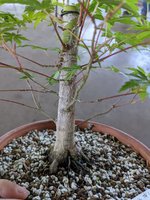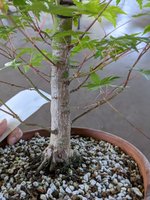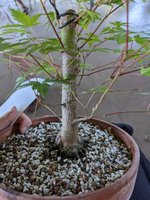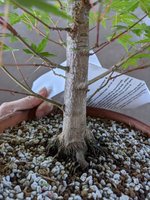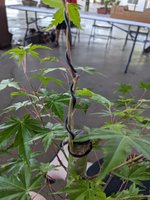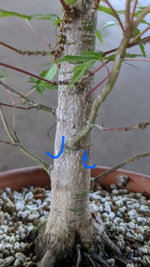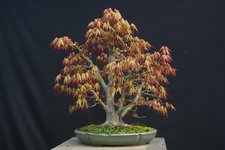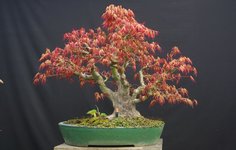I may not have been clear enough. Many beginners cut JM above a node like this one thinking it will need a side branch as well as a new leader. I have done it many times but always ends up badly. Callus from healing the cut, plus a growing side branch will quickly thicken the trunk at that spot leading to bad reverse taper. I have found it much better to cut through the node at an angle if the new leader is already strong. If not just chop above the node and wait for the new leader to gain strength then finish the cut removing the side branch.
The branch collar of the new leader will almost always produce buds to provide a side branch at that cut site to give you options for side branches without the thickening.
JM have a distinct natural growth pattern. The trunk splits into a number of rising sub trunks, almost shrublike. The tips of those sub trunks then flare outward to give the foliage planes we normally associate with branches. Done well this style can be magnificent for JM in particular.
Here's one of my crude attempts at this style:
View attachment 380590
You will find many better examples by searching pictures of Japanese Japanese maple.
Broom is actually the deciduous version of formal upright and can suit JM styling.
As
@BobbyLane has already said the trunk will need to be chopped lower - usually around 1/3 of the final height and new sub trunks grown up and out to create the basis for a canopy. Broom is the exception to the angle cut. Cut above 2 good branches and wire both upward. When they are growing strongly recut the chop as a shallow V to reduce swelling.

